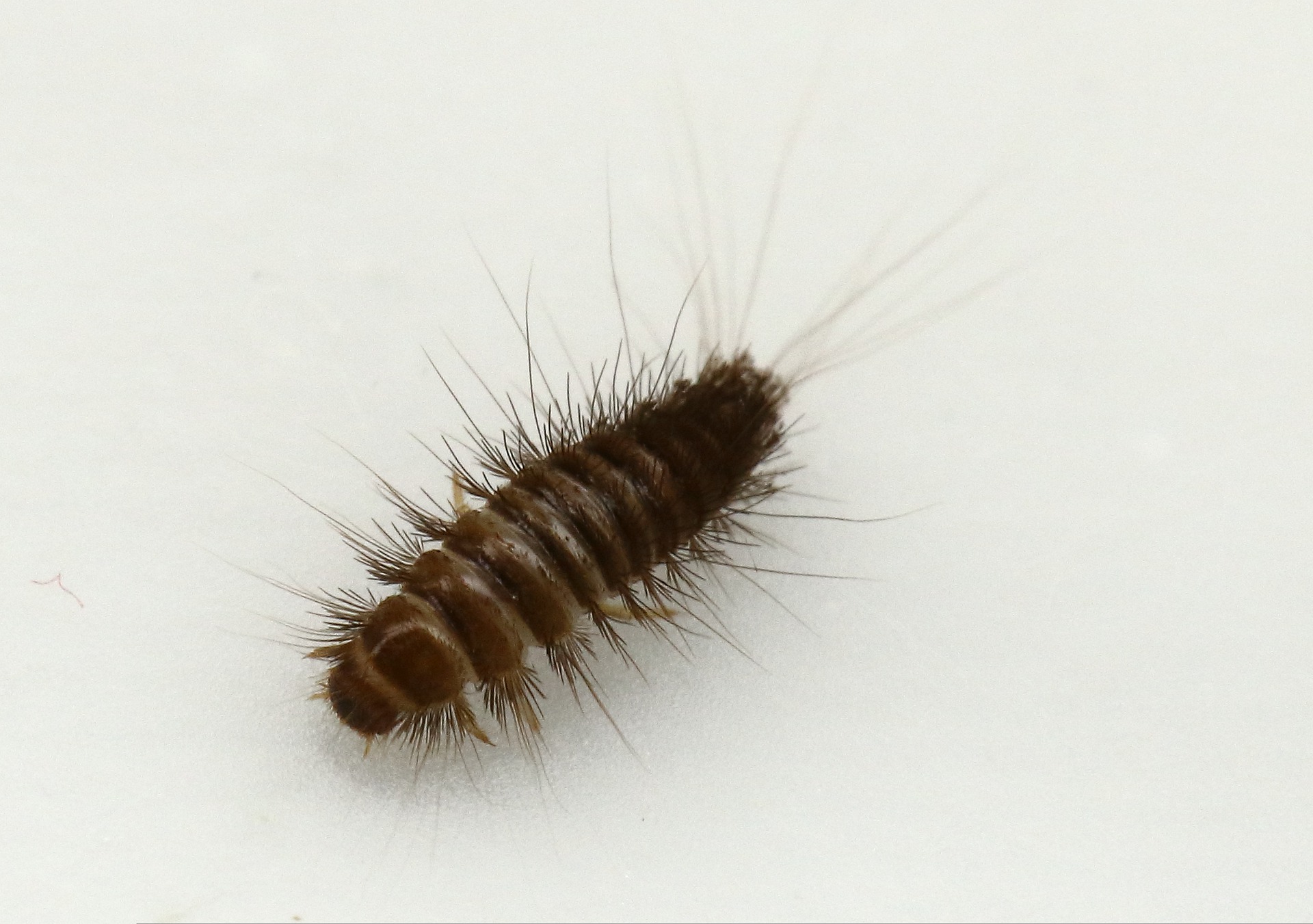They say big things come in small packages. Not untrue!
That also goes for the carpet beetle, a big pest that comes in a tiny beetle-shaped package.
When a homeowner finds themself with an infestation, they’ll often ask, “Why have I suddenly got carpet beetles?”
As with most pests that infiltrate our homes, the answer is often that the infestation wasn’t sudden. The pest was there for a little while, and now the situation has bubbled over and you’re finally seeing the result of an adult flying in through an open window and laying its eggs somewhere in your house.
They’re also often carried in unawares in an item that’s already been infested. Hardly your fault! It happens, and it goes with the standard territory of commerce and worldwide shipping and trading.
Tiny black beetle, BIG problem
So what are carpet beetles? These are a type of insect that feed on organic materials that contain keratin, which is found in many things such as hair, wool, and cotton. The nymphs and larvae—which are the stages just after the eggs hatch and before they become adult beetles—require keratin.
Fully grown adults—which are small gray-spotted black beetles—don’t eat keratin. When carpet beetles reach their adult stage, they tend to fly outside the home to find the types of plants they do feed on.
But, when it’s time to reproduce, these beetles will return to a safe place to lay their eggs where they know their young will be able to survive. E.g., a home with materials containing keratin.
Prevention: post the not welcome sign
Keeping your house clean is the first line of defense in preventing these resourceful pests from establishing a colony or nest that can result in a potentially damaging cycle that makes eradication difficult.
You can’t go wrong with regular vacuuming, paying attention even to those obnoxious spots no one wants to think about such as under the bed and along baseboards where pet hair and dander build up. Those both contain keratin and will attract the little buggers like no one’s business.
Vacuuming is ideal because it will find and destroy any eggs and larvae that have slipped your attention.
If you have organic clothing materials like wool sweaters or furs that have been stored for a season, make sure you’ve sealed them in a bag with moth balls, flakes, or crystals.
Follow the directions on these tools, of course, and don’t use too much or leave them in areas that pets or small children can reach.
But I have an infestation already! How do I get rid of carpet beetles?
Once the cycle of an infestation is underway, getting rid of them is a bit harder.
The steps include:
1) Find the main source of your infestation. Look through stored clothes items, including sock drawers and sweater drawers, paying special attention to organic materials and cotton blends.
Carpet beetles don’t eat polyester or other synthetic materials. But they will eat cotton-poly blends as well as wool blends. These include rugs and carpets, blankets, and towels.
They prefer dark and rarely disturbed areas, so keep that in mind as you hunt for the main breeding ground.
2) Once you’ve found the infested articles, you’ll need to clean or destroy the material. Dry cleaning works. As does a hot-cycle wash and dry. Carpets and rugs must be vacuumed and, if possible, cleaned.
3) Practice prevention in the future. Experience is a great teacher! In the future, you’ll pay attention to every small sign, even a single carpet beetle molted skin, and know it’s a possible sign of an infestation.
Can I be sure that I’ve gotten rid of my problem?
If you’re concerned that you haven’t nipped the problem in the bud, let us know!
Calling in an expert can speed things up and lead to less damage over the long term.
We’re here for consultations and to help ferret out the primary source of your problem. These types of pests can cause hundreds of dollars in damage before they’re noticed and eliminated. If your property has already taken a hit from carpet beetles, please give us a call.
Source: https://entomology.ca.uky.edu/ef601



